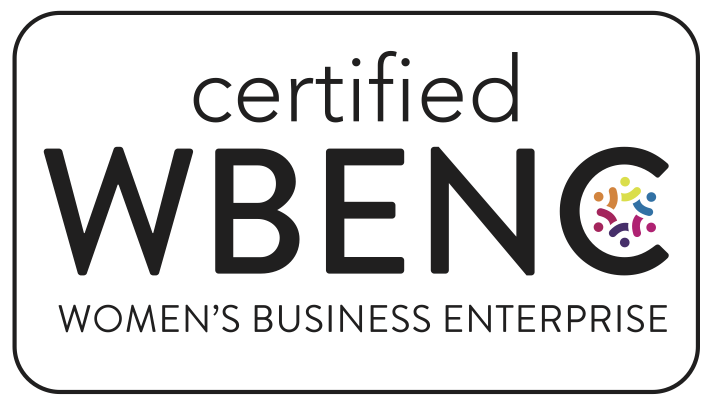Recruiters, hiring managers, and leaders from a variety of organizations recently offered their insights on the (sometimes surprising) hiring trends that companies have been following in the first half of 2022.
Prioritizing Cultural Fit and Alignment
Experience and qualifications used to play an oversized role in hiring decisions, but the Great Resignation upended traditional expectations. Qualifications are important, but people don’t want to work for just any company anymore. They want to work for those whose work cultures align with their mindsets and values—and they’ll quit if those companies aren’t the right fit. Hiring managers have to focus more on prioritizing cultural fit and alignment to stem the tide of increased turnover. (Jon Schneider, Recruiterie)
Talent Acquisition Teams Thinking More Like Sales and Marketing
Because the competition for talent is so steep, recruitment teams are needing to become more like sales and marketing teams for their companies. This means recruiters’ priorities have shifted from sourcing and interviewing to also encompass branding and strategy. They need to spend more time and energy on creating memorable touch points throughout the full candidate experience; to keep up with these new demands, they are automating more of the repetitive tasks. As more recruiters become empowered to be brand advocates, they are also leading initiatives to research new tools and develop fresh, creative ways to promote their companies’ values, missions, and cultures. (Andres Blank, Fetcher)
Niche Specialization of Recruiters
As the average number of applications per role has skyrocketed, many businesses and external agencies embrace the need for further specialization. Whereas in the past generalist recruiters sourcing candidates for a range of office jobs were the norm, now recruiters specialize not only in specific job functions but even in their industry-related versions. For example, instead of hiring analysts, accountants, and administrative staff, some recruiters might handle only business intelligence specialists in e-commerce or database developers in financial technology. (Michael Sena, SENACEA)
Continued Growth in Outsourcing
If the pandemic proved anything, it’s that companies with nimble workforces have an advantage over those that are stuck in old modes of handling staffing issues. In hiring, onboarding, and scheduling, outsourcing makes life easier. And so far 2022 is seeing recognition of the benefits of outsourcing in terms of operations, administration, and cost savings. This trend will continue through the year. (Stephanie Tanhueco, C9 Staff)
Video Resumes
Since Generation Z used TikTok to start the video resume trend, it has become a common way to apply to creative fields and positions, especially those in video editing and graphic design. Video resumes will most likely become popular among corporate positions as well, because it is a great way for recruiters to get a good look at who they are interviewing and potentially hiring. (Olivia Young, Conscious Items)
Increasing Use of AI
I’m consistently surprised by the capabilities of AI in hiring, and I think the HR industry is catching on. As we’re all still dealing with hiring problems that won’t seem to go away from last year (e.g., labor shortages, Great Resignation, burned-out recruiters), we’re seeing more and more HR leaders turn to AI assistants for... assistance. AI assistants can screen candidates, field questions, and schedule (and reschedule) interviews, thus allowing recruiters and hiring managers to shed the repetitive administrative work and focus on the highest priority: people. So although I’m surprised to see the problems of 2021 being so persistent, I love to see how more and more talent leaders are finding out how AI can assist their teams in hiring better and faster. (Josh Zywein, Paradox)
Boomerang Recruitment
With the Great Resignation (also called “the Great Reshuffle”), I’m seeing an increased focus on hiring both internal candidates in order to retain top talent as well as former employees—“boomerangs”—in order to harness previously vetted talent. Our research finds that 72 percent of employees would consider rejoining a former employer given the right opportunity, and half said they have regretted leaving a former employer. Indeed, the grass isn’t always greener on the other side of the fence, and now is the time to tap into this often forgotten resource. Boomerangs already know what they are signing up for in terms of culture and often outperform external hires. (Brett Wells, Perceptyx)
Focus on Innovation and Technology
Medical schools and healthcare facilities are becoming more and more technologically advanced. To minimize recovery time, decrease human errors, and reduce cost, more health professionals are learning to use innovation and technology to their advantage. When used for documentation, minimally invasive procedures, and more, technology is important for the future of healthcare. It’s also great when newly hired healthcare professionals come on board already having significant knowledge of and experience with newer innovative tools and devices. (Paul Breen, Strelcheck Healthcare Search)
Renewed Focus on Team Engagement and Collaboration
More employees are working from home than ever before, and hybrid work environments are also becoming increasingly common. Business as usual has had to make way for the new normal, and companies realize they must adapt quickly to changed circumstances. This is why, in 2022, there is a renewed focus on the ability of team members to collaborate with each other, wherever they are. Team engagement and collaboration lead to higher productivity levels across a company. (Ed Stevens, Preciate)
Prospective Employees Work Together
In the past few years, there has been a huge shift in hiring trends. The focus seems to be much more on finding out how well prospective employees work together and their ability to collaborate with other teams. This could be because of the rapid growth of the Internet and the rise of social media platforms such as Facebook and Twitter that empower users to share their thoughts and opinions with others from different countries who speak different languages. In 2022, many employers are hiring diverse workforces in order to better represent a multitude of perspectives. This is an important consideration for companies that wish to remain relevant in a changing demographic landscape. (Ben Miller, Focus on Digital)
Use of Values-based Job Postings
Recently we’ve had more responsiveness when posting jobs that speak to the values of the company and target the values of our ideal hire. We’ve appealed to the desire to build a future and showed how this position helps them do that. We’ve also clearly stated the company’s vision and values and how we’re making people’s lives better. We have also appealed to specific life stages, figuring out what kind of person would be the best fit and mentioning that in our posting. For example, when recently looking for a part-time floral delivery position—“floral ambassador”—we appealed to retirees and moms who want a bit more flexibility instead of rigid schedules. (Karin Crawford, God’s Garden Treasures)
Reaching out to Passive Candidates
Last year saw many companies competing for candidates with in-demand skill sets. Instead of limiting themselves to the few candidates actively searching for jobs, companies are now reaching out to passive candidates who are not currently looking to change employers. Sourcing passive candidates expands the potential talent pool, and employers have grasped the potential this shift offers. In 2022, I’m seeing a dramatic rise in digital attraction strategies designed to attract and engage passive candidates. This is often coupled with the formation of dedicated sourcing teams that are tasked with searching, identifying, and contacting potential candidates. (Dean Kaplan, Kaplan Collection Agency)
Companies Are Still Resisting Remote Work
Disconcertingly, a number of companies still require in-person employees. Expecting workers to make moving plans while in-office work isn’t back in full swing yet just adds to the uncertainty many people are already experiencing. I think it’s best to let workers start as remote employees, if possible. If all is going well, you can later assess whether they’re actually needed in person. Remote work simply works better for many people. (Anne-Marie Faiola, Bramble Berry)

